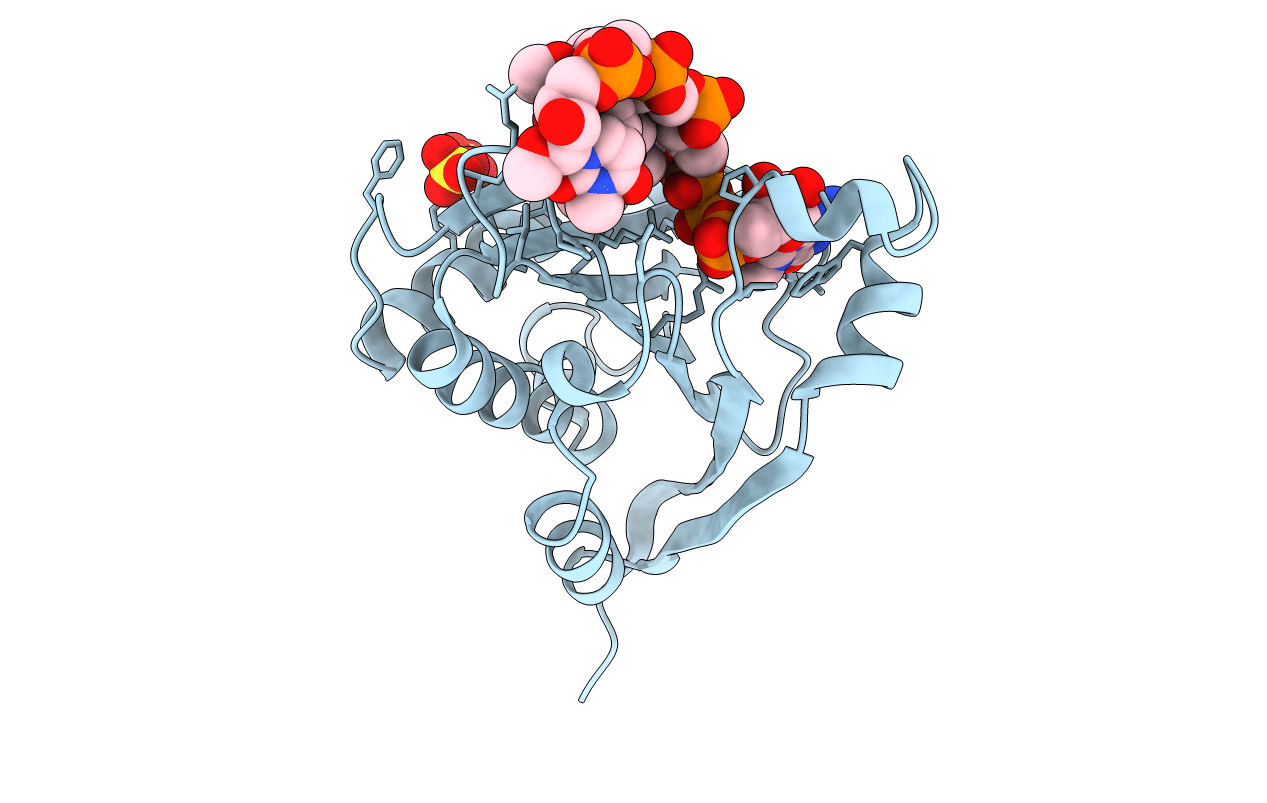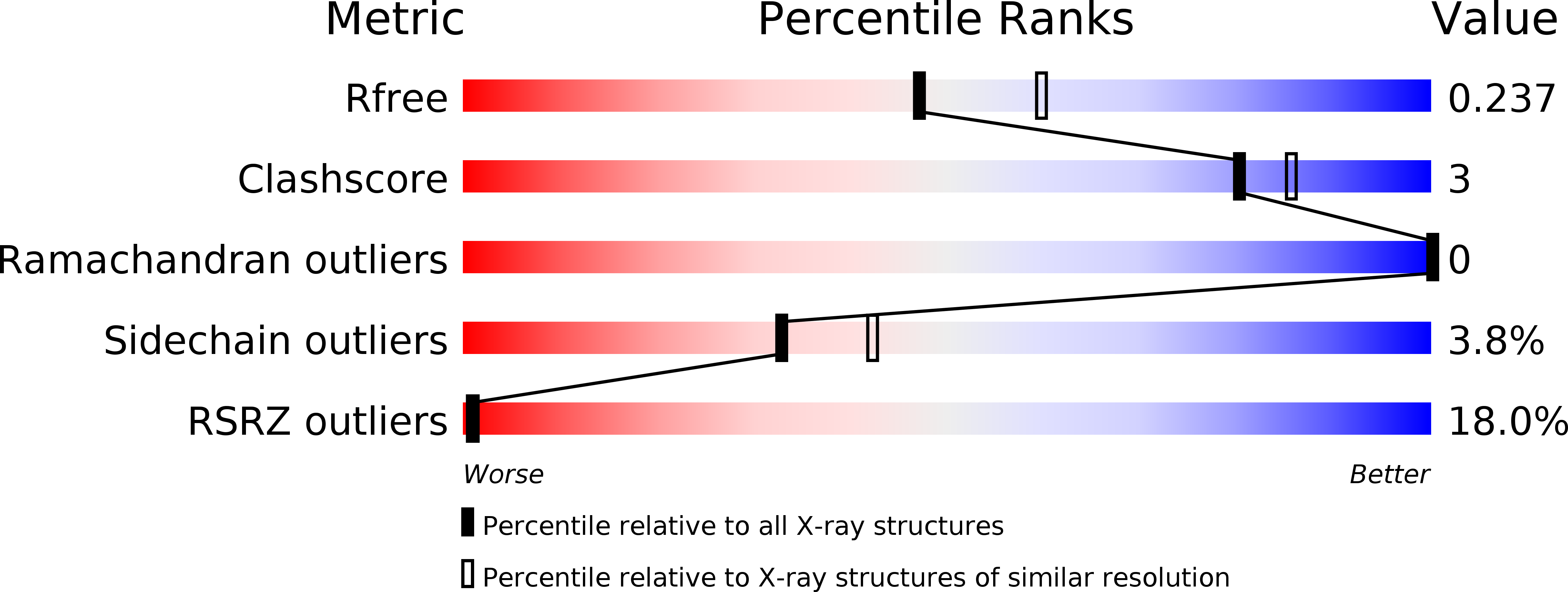
Deposition Date
2019-03-08
Release Date
2019-05-01
Last Version Date
2024-03-13
Entry Detail
PDB ID:
6O7Y
Keywords:
Title:
Trypanosoma cruzi EIF4E5 translation initiation factor in complex with cap-4
Biological Source:
Source Organism:
Trypanosoma cruzi (Taxon ID: 5693)
Host Organism:
Method Details:
Experimental Method:
Resolution:
2.20 Å
R-Value Free:
0.22
R-Value Work:
0.20
R-Value Observed:
0.20
Space Group:
P 31 2 1


